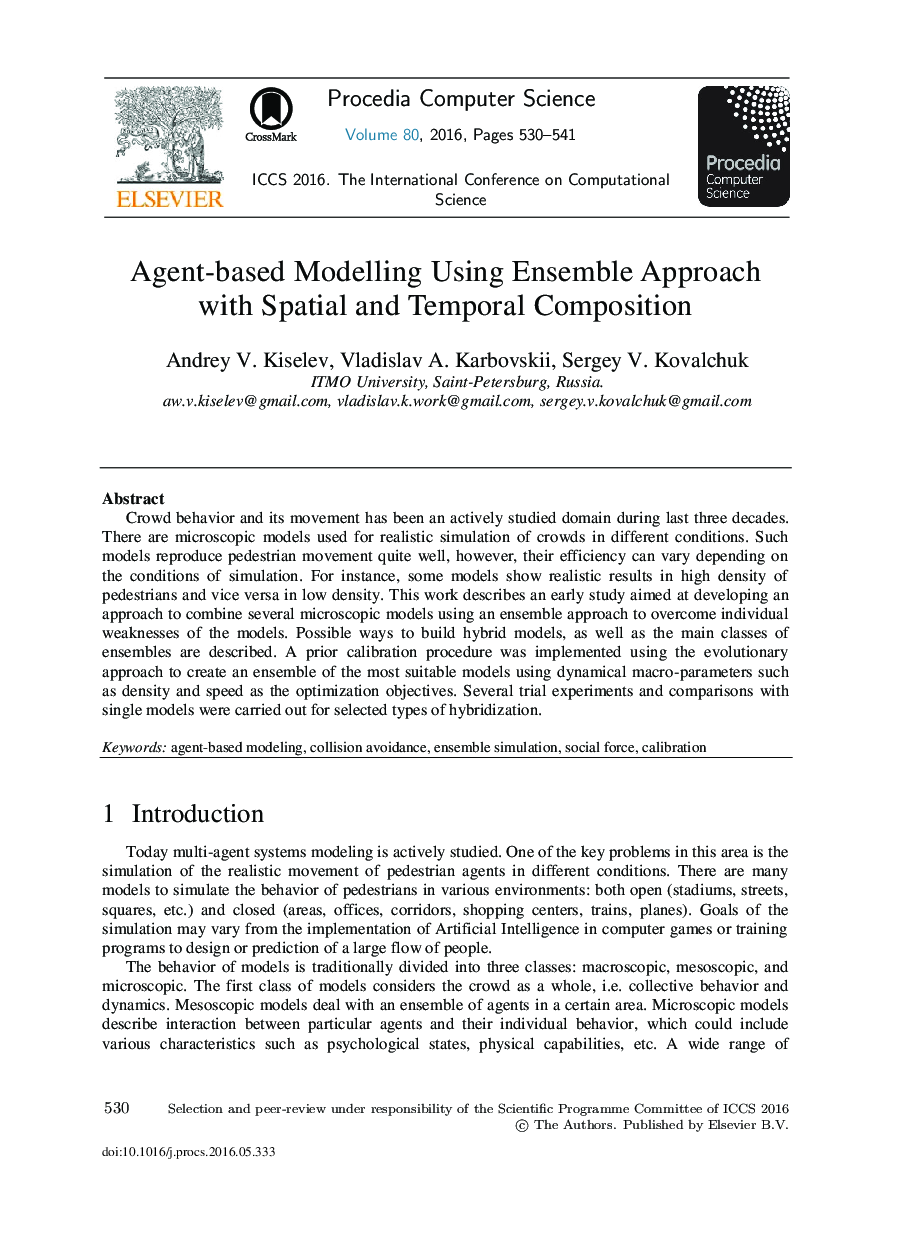| Article ID | Journal | Published Year | Pages | File Type |
|---|---|---|---|---|
| 484115 | Procedia Computer Science | 2016 | 12 Pages |
Crowd behavior and its movement has been an actively studied domain during last three decades. There are microscopic models used for realistic simulation of crowds in different conditions. Such models reproduce pedestrian movement quite well, however, their efficiency can vary depending on the conditions of simulation. For instance, some models show realistic results in high density of pedestrians and vice versa in low density. This work describes an early study aimed at developing an approach to combine several microscopic models using an ensemble approach to overcome individual weaknesses of the models. Possible ways to build hybrid models, as well as the main classes of ensembles are described. A prior calibration procedure was implemented using the evolutionary approach to create an ensemble of the most suitable models using dynamical macro-parameters such as density and speed as the optimization objectives. Several trial experiments and comparisons with single models were carried out for selected types of hybridization.
